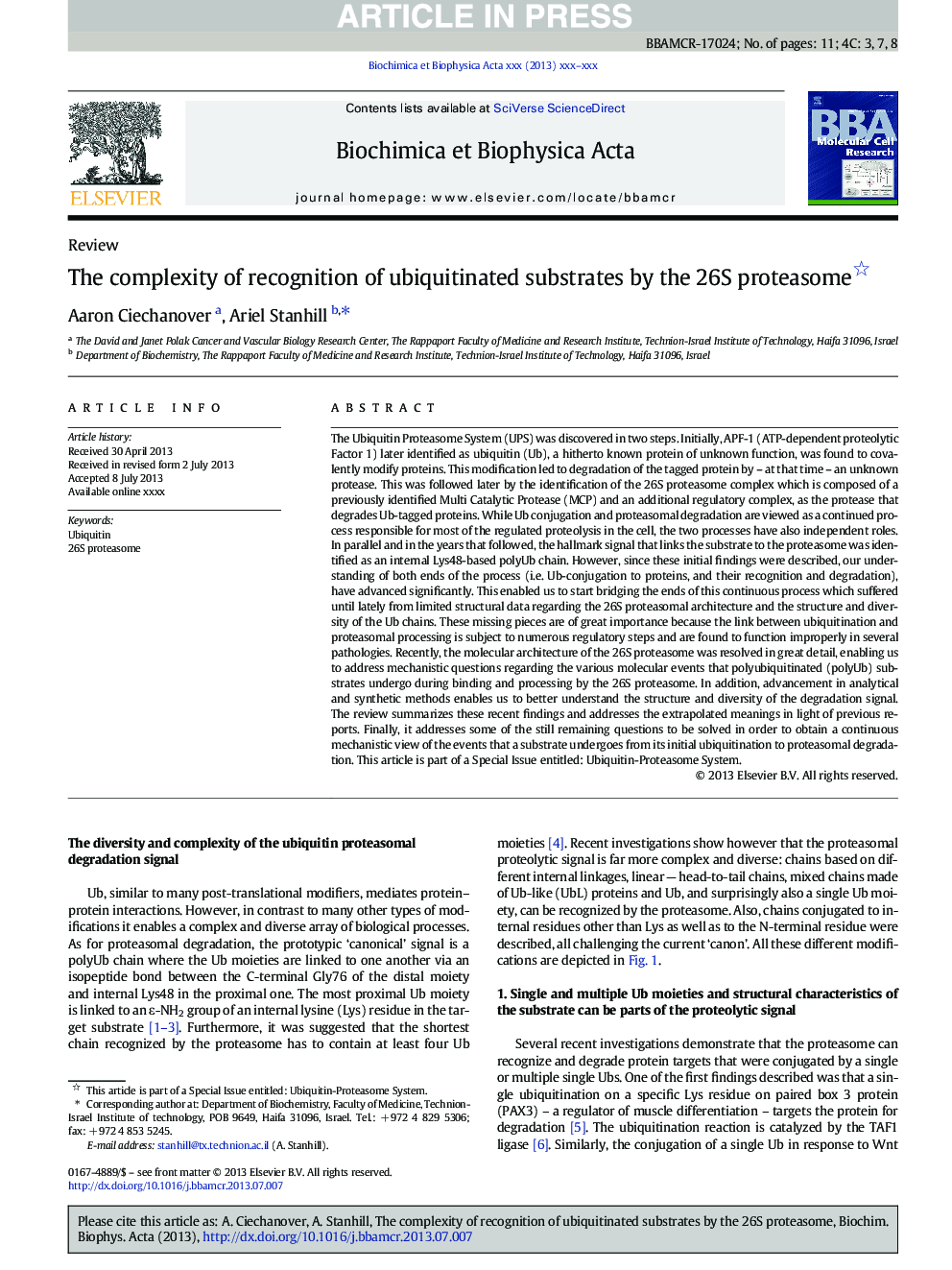| کد مقاله | کد نشریه | سال انتشار | مقاله انگلیسی | نسخه تمام متن |
|---|---|---|---|---|
| 10802185 | 1055666 | 2014 | 11 صفحه PDF | دانلود رایگان |
عنوان انگلیسی مقاله ISI
The complexity of recognition of ubiquitinated substrates by the 26S proteasome
دانلود مقاله + سفارش ترجمه
دانلود مقاله ISI انگلیسی
رایگان برای ایرانیان
موضوعات مرتبط
علوم زیستی و بیوفناوری
بیوشیمی، ژنتیک و زیست شناسی مولکولی
زیست شیمی
پیش نمایش صفحه اول مقاله

چکیده انگلیسی
The Ubiquitin Proteasome System (UPS) was discovered in two steps. Initially, APF-1 (ATP-dependent proteolytic Factor 1) later identified as ubiquitin (Ub), a hitherto known protein of unknown function, was found to covalently modify proteins. This modification led to degradation of the tagged protein by - at that time - an unknown protease. This was followed later by the identification of the 26S proteasome complex which is composed of a previously identified Multi Catalytic Protease (MCP) and an additional regulatory complex, as the protease that degrades Ub-tagged proteins. While Ub conjugation and proteasomal degradation are viewed as a continued process responsible for most of the regulated proteolysis in the cell, the two processes have also independent roles. In parallel and in the years that followed, the hallmark signal that links the substrate to the proteasome was identified as an internal Lys48-based polyUb chain. However, since these initial findings were described, our understanding of both ends of the process (i.e. Ub-conjugation to proteins, and their recognition and degradation), have advanced significantly. This enabled us to start bridging the ends of this continuous process which suffered until lately from limited structural data regarding the 26S proteasomal architecture and the structure and diversity of the Ub chains. These missing pieces are of great importance because the link between ubiquitination and proteasomal processing is subject to numerous regulatory steps and are found to function improperly in several pathologies. Recently, the molecular architecture of the 26S proteasome was resolved in great detail, enabling us to address mechanistic questions regarding the various molecular events that polyubiquitinated (polyUb) substrates undergo during binding and processing by the 26S proteasome. In addition, advancement in analytical and synthetic methods enables us to better understand the structure and diversity of the degradation signal. The review summarizes these recent findings and addresses the extrapolated meanings in light of previous reports. Finally, it addresses some of the still remaining questions to be solved in order to obtain a continuous mechanistic view of the events that a substrate undergoes from its initial ubiquitination to proteasomal degradation. This article is part of a Special Issue entitled: Ubiquitin-Proteasome System. Guest Editors: Thomas Sommer and Dieter H. Wolf.
ناشر
Database: Elsevier - ScienceDirect (ساینس دایرکت)
Journal: Biochimica et Biophysica Acta (BBA) - Molecular Cell Research - Volume 1843, Issue 1, January 2014, Pages 86-96
Journal: Biochimica et Biophysica Acta (BBA) - Molecular Cell Research - Volume 1843, Issue 1, January 2014, Pages 86-96
نویسندگان
Aaron Ciechanover, Ariel Stanhill,